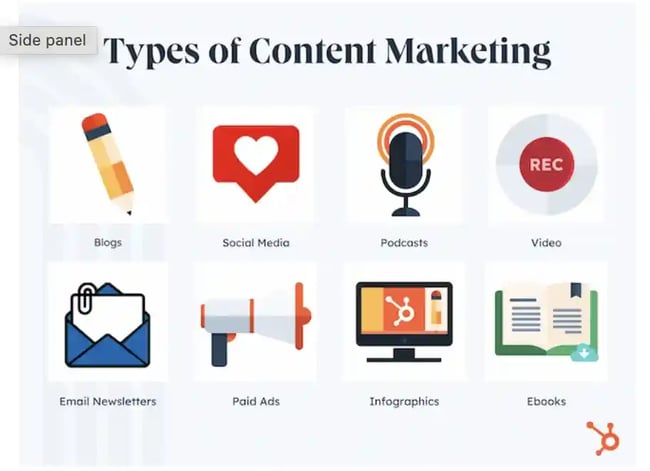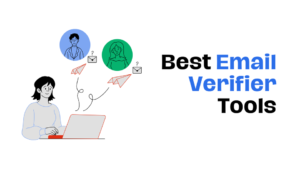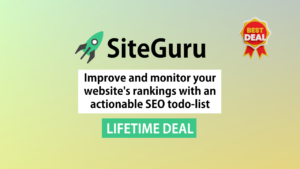Content marketing is a powerful tool for businesses. It helps attract and engage customers.
In today’s digital world, content is king. Businesses use it to connect with their audience. It’s not just about selling; it’s about providing value. Good content can educate, entertain, and inspire. It builds trust and loyalty. When done right, content marketing can boost your brand’s visibility and credibility.
It helps you stand out in a crowded market. Ready to learn more? Let’s dive into the world of content marketing and see how it can benefit your business.

Credit: interruptmedia.com
Table of Contents
ToggleIntroduction To Content Marketing
Content Marketing is a powerful tool for building brand awareness and driving sales. It involves creating valuable content to attract and engage your target audience. This method focuses on providing useful information rather than directly promoting a product. Let’s dive into the basics of content marketing and understand why it is essential for brands.
What Is Content Marketing?
Content marketing is the art of using content to connect with your audience. This can include blog posts, videos, social media updates, and more. The goal is to create content that is informative, entertaining, or educational. Valuable content builds trust and loyalty among your audience.
Here are some common forms of content marketing:
- Blog posts
- Videos
- Infographics
- Podcasts
- Social media updates
Each type of content serves a different purpose. Blogs educate, videos entertain, and social media engages. The right mix depends on your audience and goals.
Importance For Brands
Content marketing is crucial for brands for several reasons. First, it helps establish authority in your industry. Quality content shows you know your stuff. It positions your brand as a leader.
Second, content marketing improves SEO (Search Engine Optimization). Search engines favor websites with fresh, relevant content. More content means better rankings. Better rankings mean more traffic.
Third, content marketing builds relationships. Engaging content encourages interaction. It fosters a sense of community. People are more likely to support brands they feel connected to.
Consider these benefits:
| Benefit | Explanation |
|---|---|
| Brand Authority | Shows expertise in your field. |
| Improved SEO | Boosts search engine rankings. |
| Audience Engagement | Builds loyal followers. |
Content marketing is not just about selling. It’s about creating value. It’s about connecting with people. And that connection can lead to long-term success.
Setting Goals
Setting clear goals is crucial for content marketing success. Without goals, you can’t measure progress. Goals guide your strategy and help you stay focused. They ensure every piece of content serves a purpose. Here are key steps to setting effective goals for your content marketing strategy.
Identifying Objectives
First, determine what you want to achieve. Are you aiming to boost website traffic? Increase brand awareness? Or generate more leads? Your objectives should be specific and measurable. For example, “Increase blog traffic by 20% in six months” is clear and trackable.
Consider using the SMART criteria for setting objectives:
- Specific: Clearly define your goal.
- Measurable: Ensure you can track progress.
- Achievable: Set realistic goals.
- Relevant: Align goals with your business objectives.
- Time-bound: Set a deadline for achieving the goal.
Measuring Success
Once your objectives are set, you need to measure success. Use key performance indicators (KPIs) to track progress. KPIs could include website traffic, social media engagement, or lead generation.
Here are some common KPIs for content marketing:
| KPI | Description |
|---|---|
| Website Traffic | Number of visitors to your site |
| Engagement | Likes, shares, and comments on social media |
| Lead Generation | Number of new leads from content |
| Conversion Rate | Percentage of visitors who become customers |
Track these KPIs regularly to see what’s working. Adjust your strategy if needed. Use analytics tools like Google Analytics to get detailed insights.
Audience Analysis
Audience analysis is a crucial step in content marketing. It helps in understanding who your target audience is. This ensures your content reaches the right people. This section will focus on understanding your audience and creating buyer personas.
Understanding Your Audience
To create engaging content, you need to know your audience. This means understanding their interests, needs, and preferences. Start by gathering data. Use tools like Google Analytics and social media insights.
- Demographics: Age, gender, income, education level.
- Location: Where they live, work, and shop.
- Behavior: Online habits, purchase history.
Once you have this data, look for patterns. Are there common interests or behaviors? Use this information to tailor your content.
Creating Buyer Personas
Buyer personas are fictional characters. They represent your ideal customers. Creating personas helps you visualize who you are writing for.
| Persona Element | Details |
|---|---|
| Name | Give your persona a name. It makes them feel real. |
| Demographics | Include age, gender, occupation, and income. |
| Goals | What are they trying to achieve? |
| Challenges | What obstacles do they face? |
Use the data from your audience analysis to fill in these details. Create 2-3 different personas to cover your main audience segments.
Here is an example of a simple buyer persona:
- Name: Sarah
- Age: 30
- Occupation: Marketing Manager
- Goals: Improve brand awareness
- Challenges: Limited budget, high competition
Creating detailed personas helps in crafting targeted content. This makes your content more relevant and engaging.
Content Strategy
Having a well-defined Content Strategy is crucial for successful content marketing. It helps you understand your audience and deliver valuable information. A solid plan ensures consistency, relevance, and engagement. Let’s dive into the key components of a content strategy.
Types Of Content
Choosing the right types of content is essential to reach your audience. Here are some popular formats:
- Blog Posts: Informative articles that address specific topics.
- Videos: Engaging visual content that captures attention.
- Infographics: Visual representations of data and information.
- Podcasts: Audio content for on-the-go consumption.
- eBooks: In-depth guides on specific subjects.
- Social Media Posts: Short and engaging updates for various platforms.
Content Planning
Content Planning helps you organize and schedule your content effectively. Here are some steps to follow:
- Define Goals: Set clear objectives for your content.
- Identify Audience: Understand who you are targeting.
- Keyword Research: Find relevant keywords to optimize your content.
- Create a Calendar: Plan your content schedule in advance.
- Assign Tasks: Allocate responsibilities to team members.
- Track Performance: Monitor the success of your content.
Here’s an example of a simple content calendar:
| Week | Content Type | Topic | Responsible |
|---|---|---|---|
| Week 1 | Blog Post | Content Strategy Basics | John |
| Week 2 | Video | Types of Content | Jane |
| Week 3 | Infographic | Content Planning Steps | Mike |
| Week 4 | Podcast | Content Strategy Examples | Sarah |
Effective content planning ensures your strategy is actionable and measurable. It keeps your team aligned and focused on goals. A well-planned strategy leads to better engagement and results.
Content Creation
Content Creation is the backbone of effective content marketing. It involves producing valuable, relevant, and consistent content to attract and retain a clearly defined audience. By focusing on content creation, businesses can engage their audience, build trust, and drive profitable customer action.
Writing Engaging Content
Writing engaging content is essential for capturing your audience’s attention. Use short sentences and simple language. This makes your content easy to read and understand. Here are some tips for writing engaging content:
- Know your audience: Understand their needs, preferences, and pain points.
- Use a conversational tone: Write as if you are speaking directly to your reader.
- Incorporate storytelling: Share relatable stories to connect emotionally with your audience.
- Provide value: Offer practical tips, insights, and solutions to their problems.
- Use headings and subheadings: Break up your content into digestible sections.
- Include a call-to-action: Encourage readers to take the next step.
Visual Content
Visual content is a powerful tool for enhancing your message. It includes images, videos, infographics, and other visual elements. Visual content helps to grab attention and make your content more memorable. Here are some benefits of using visual content:
| Type of Visual Content | Benefits |
|---|---|
| Images | Break up text, illustrate points, and make content more engaging. |
| Videos | Explain complex ideas, showcase products, and build a deeper connection. |
| Infographics | Present data and information in an easy-to-understand format. |
| Graphs and Charts | Visualize statistics and trends for better comprehension. |
By combining written and visual content, you can create a richer and more engaging experience for your audience. This approach caters to different learning styles and keeps your audience interested.
Content Distribution
Effective Content Distribution is crucial for the success of your content marketing strategy. Without distributing your content, it may never reach your target audience. Content distribution involves sharing your content across various platforms. This helps you maximize its reach and engagement. Below, we will discuss some key channels for content distribution.
Social Media Platforms
Social media platforms are powerful tools for content distribution. They allow you to reach a broad audience quickly. Each platform has its own strengths and best practices.
- Facebook: Ideal for engaging with a diverse audience. Share blog posts, videos, and images.
- Twitter: Great for real-time updates and short messages. Use hashtags to increase visibility.
- LinkedIn: Perfect for B2B content. Share professional articles, case studies, and industry news.
- Instagram: Best for visual content. Share photos, infographics, and short videos.
Remember to tailor your content to each platform. This ensures better engagement and reach.
Email Marketing
Email marketing remains one of the most effective content distribution channels. It allows you to deliver content directly to your audience’s inbox. Here are some tips for successful email marketing:
- Create a Strong Subject Line: This increases your open rates. Make it catchy and relevant.
- Segment Your Audience: Tailor your messages to different segments. This improves engagement.
- Use a Clear Call to Action (CTA): Guide your audience on what to do next. Make it simple and direct.
- Include Visuals: Use images and videos to make your emails more engaging.
Consistently measure your email campaign performance. This helps you understand what works and what needs improvement.
Seo Best Practices
In the realm of content marketing, adhering to SEO best practices is paramount. These practices help in enhancing your online presence and driving organic traffic. This section will cover essential aspects of SEO, focusing on keyword research and on-page SEO.
Keyword Research
Keyword research is the foundation of any successful SEO strategy. It involves identifying the terms and phrases your target audience uses to search for information. Proper keyword research ensures that your content aligns with what users are looking for.
Consider using tools like Google Keyword Planner or Ahrefs to find relevant keywords. These tools provide insights into search volume and competition, allowing you to choose the best keywords.
- Focus on long-tail keywords for more specific queries.
- Analyze competitor keywords to find gaps.
- Use keywords naturally in your content.
On-page Seo
On-page SEO refers to optimizing individual web pages to rank higher in search engines. This involves several elements, each contributing to better visibility.
Here are some key on-page SEO practices:
- Title Tags: Ensure your title tags are descriptive and include the primary keyword.
- Meta Descriptions: Write compelling meta descriptions that encourage clicks.
- Headings: Use headings (H1, H2, H3) to structure your content and include keywords.
- Content Quality: Provide valuable, relevant, and informative content. Aim for readability and engagement.
- Internal Links: Link to other pages on your site to keep users engaged and improve navigation.
- Image Optimization: Use alt text for images and compress them for faster loading times.
Adhering to these SEO best practices will enhance your content’s visibility and relevance, driving more traffic to your site.
Analyzing Performance
Content marketing is not just about creating and sharing content. It is also crucial to analyze the performance of your content. By doing so, you can understand what works and what does not. This helps in refining your strategy for better results.
Using Analytics Tools
Using analytics tools is essential for measuring content performance. Tools like Google Analytics provide valuable insights. You can track metrics such as:
- Page views
- Average time on page
- Bounce rate
- Conversion rate
These metrics help identify which content engages your audience. They also show areas needing improvement.
| Metric | What it shows |
|---|---|
| Page views | Number of times a page is viewed |
| Average time on page | Time users spend on a page |
| Bounce rate | Percentage of users leaving after viewing one page |
| Conversion rate | Percentage of users completing a desired action |
Adjusting Your Strategy
Once you have analyzed the data, it is time to adjust your strategy. Focus on content that performs well. Try to understand why it is successful.
- Identify top-performing content.
- Analyze the elements that make it successful.
- Replicate those elements in future content.
Also, look at content that does not perform well. Identify the reasons behind its poor performance. Make necessary changes to improve it.
Adjusting your strategy based on data helps in:
- Creating more engaging content
- Improving user experience
- Increasing conversion rates
Regularly analyzing performance ensures your content marketing stays effective.
Case Studies
Case studies are essential in understanding the real-world application of content marketing strategies. They provide detailed insights into what worked, what didn’t, and why. This section will explore successful campaigns and the lessons learned from them.
Successful Campaigns
Many brands have seen great results with their content marketing efforts. Let’s look at some examples.
| Brand | Campaign | Results |
|---|---|---|
| Red Bull | Stratos Jump | Increased brand awareness, millions of views |
| Dove | Real Beauty | Boosted engagement, positive brand image |
| GoPro | User-Generated Content | High engagement, authentic content |
Lessons Learned
From these campaigns, several key lessons emerge.
- Authenticity Matters: Audiences connect with genuine, relatable content.
- Engagement is Key: Interactive content drives higher engagement rates.
- Leverage User Content: User-generated content builds trust and authenticity.
- Storytelling Works: Stories captivate and hold audience attention.
Understanding these lessons can help in crafting more effective content strategies. Brands that focus on authentic, engaging, and user-driven content often see the best results.

Credit: outreachfrog.com
Future Trends
The landscape of content marketing is always evolving. Staying current with future trends is vital. Emerging technologies and adapting to changes can make a big impact. Let’s explore these key areas.
Emerging Technologies
Technology is changing content marketing. Here are some trends to watch:
- Artificial Intelligence (AI): AI helps create personalized content. It analyzes user data to understand preferences.
- Voice Search: More people use voice assistants. Optimize content for voice search to reach this audience.
- Augmented Reality (AR) and Virtual Reality (VR): These technologies offer interactive experiences. They can engage users in new ways.
- Blockchain: Blockchain ensures data security and transparency. It can build trust with your audience.
Adapting To Changes
The digital world is always changing. Businesses must adapt to stay relevant. Here are some ways to adapt:
- Content Diversification: Create varied content types. Use blogs, videos, podcasts, and infographics.
- Data-Driven Decisions: Use analytics to guide your strategy. Adjust based on performance metrics.
- Mobile Optimization: More users access content on mobile devices. Ensure your content is mobile-friendly.
- User-Generated Content: Encourage users to create and share content. It builds community and trust.
Adapting to these changes can keep your content strategy effective. Stay updated with trends to remain competitive.

Credit: community.hubspot.com
How Can Content Marketing Help Boost Your Brand’s Online Presence?
Content marketing can significantly boost your online presence by creating valuable and engaging content for your target audience. With strategic and consistent content creation, distribution, and promotion, your brand can establish authority, build relationships with customers, and improve visibility across various online platforms.
How Does Content Marketing Help in Boosting Online Presence Compared to Digital Marketing?
Content marketing helps boost your online presence today by providing valuable and relevant information to your target audience. It allows you to connect with potential customers through engaging content, improve brand visibility, and establish thought leadership. Unlike digital marketing, content marketing focuses on creating and sharing content to attract and retain a specific audience. Moreover, content marketing can complement your existing digital marketing strategies by providing a solid foundation for social media and email marketing efforts. By creating high-quality, shareable content, you can increase your brand’s social media presence and reach a wider audience. Additionally, effective content marketing can also improve your website’s SEO and help drive organic traffic to your site, ultimately enhancing the effectiveness of your digital marketing strategies.
Frequently Asked Questions
What Is Content Marketing?
Content marketing is a strategic approach focused on creating valuable, relevant content. It aims to attract and retain a defined audience. The goal is to drive profitable customer action.
Why Is Content Marketing Important?
Content marketing builds trust and loyalty with your audience. It helps improve brand awareness and generates leads. It also enhances customer engagement and drives sales.
How Does Content Marketing Work?
Content marketing works by delivering useful, relevant content to your target audience. This content addresses their needs and pain points. Over time, it builds trust and encourages them to take action.
What Are Examples Of Content Marketing?
Examples of content marketing include blog posts, videos, podcasts, and social media updates. E-books, whitepapers, and case studies are also common. These formats engage and educate your audience.
Conclusion
Content marketing remains essential for building relationships with your audience. By delivering valuable content, you engage and retain customers. Consistency in your message ensures your brand stays memorable. Analyze your results regularly. Adjust your strategies for better outcomes. Remember, the focus is on your audience’s needs.
Keep your content relevant and fresh. Stay committed to providing value. This dedication will drive your business growth.








